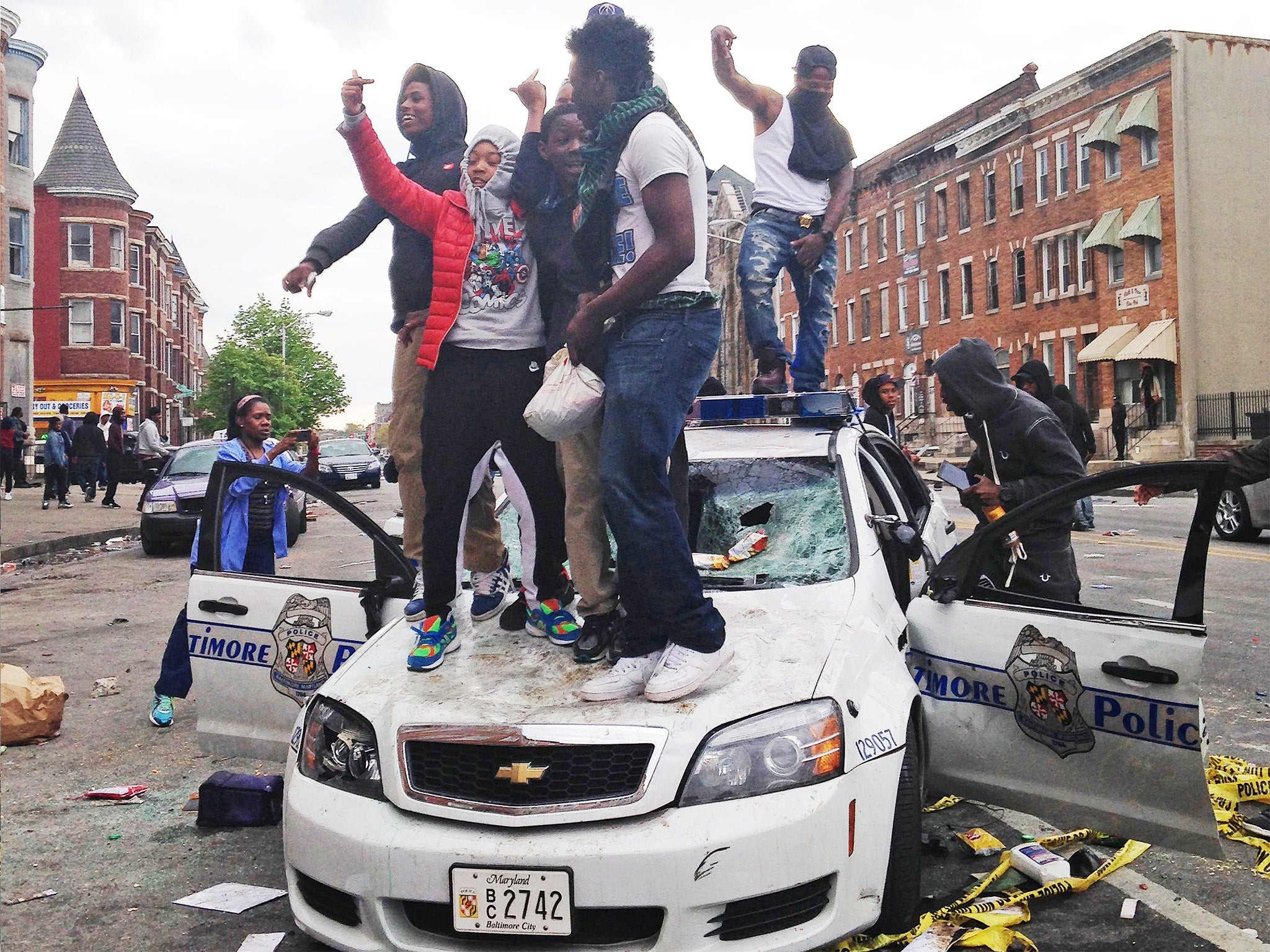Baltimore riots: It is time for America to acknowledge its desperate, forgotten neighbourhoods
The whole world is watching as Maryland's largest city erupts in violence

“Get out of our way, sister,” the teenager with a tattooed neck standing in the middle of a West Baltimore street yelled. “We’re going downtown.” I stood to the side as waves of angry youths headed past me, surging toward the neighbourhood where Freddie Gray was arrested two weeks ago. The teenagers rampaging through the streets after Gray’s funeral were angry. And confused. It was the essence of Baltimore’s mixed message.
If you want to understand the violence engulfing this city, you have to start on the street where Gray was taken into custody. It is a blighted, joyless place of boarded-up buildings. The sidewalks of Sandtown-Winchester are strewn with rubbish, and the signs on a tiny strip of scraggly grass deliver a warning: “No Pets Allowed. No Ball Playing.”
Freddie Gray’s death raises questions about the state of Baltimore, Maryland’s largest city. It was here, in West Baltimore, that he lived all of his 25 years, and where his body was broken.
“It’s like we live under martial law,” said Charles Thomas, 63, a former prison guard who has lived in Sandtown for nine years. “I understand that police have a job to do. I did a job like that for years. But here, the police don’t know us. They don’t know the neighbours.”
Now, the whole world is watching as the city erupts in violence. The crushing poverty and decay in Sandtown stand as a stark contrast to the tourist attractions of the Inner Harbour – a revitalisation project that was hailed in 1984 by the American Institute of Architects as “one of the supreme achievements of large-scale urban design and development in US history.”
The National Aquarium, the Maryland Science Centre and the waterfront mall made Baltimore a vanguard of the country’s urban renaissance movement. But that vitality barely moved into other parts of the city.
Sandtown feels like a world away from the Inner Harbour. Its poverty is more visually jarring than even the poorest neighbourhoods in the district. “There’s a lot of hopelessness here now, and that’s changed since I lived here,” says John Jones, 49. He grew up in West Baltimore but now works and lives on the other side of the city. Is this a huge moment in America’s consciousness, where it is about to finally acknowledge the country’s forgotten neighbourhoods?
Baltimore has long been “the city of neighbourhoods”, said Meg Ward, executive director of the Patrick Allison House, which helps ex-offenders move back into their communities. “We all need to be part of a whole city, not just our own little neighbourhoods.”
© The Washington Post
Join our commenting forum
Join thought-provoking conversations, follow other Independent readers and see their replies
Comments